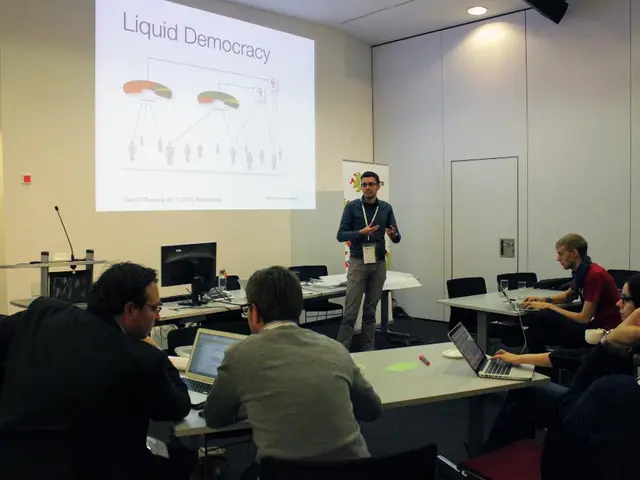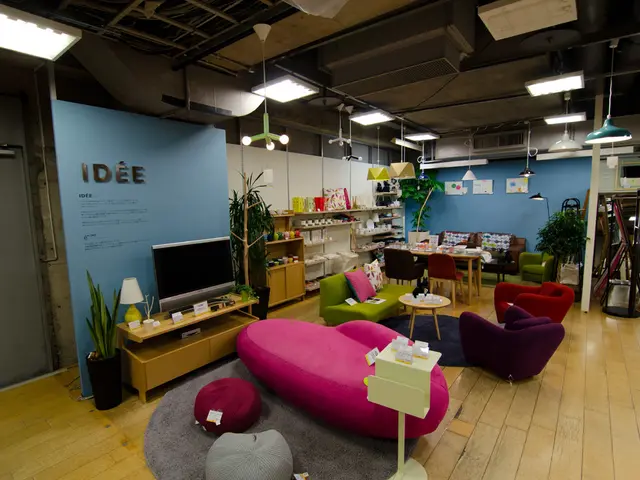Significant Legal Battles over Patents, Influencing Technology Advancements and Legal Frameworks
Patent disputes have played a significant role in shaping innovation and the broader economic landscape throughout history. These conflicts, such as the famous battles between the Wright Brothers and Glenn Curtiss, and Thomas Edison and Nikola Tesla, have influenced patent law precedents, technological development, and market competition.
The Wright Brothers vs. Glenn Curtiss
In the early 1900s, the Wright Brothers patented their airplane control system and aggressively defended these patents. Glenn Curtiss, a prominent aviation pioneer, challenged these patents, leading to a lengthy legal battle. This dispute slowed some aspects of innovation in early aviation by creating a patent "thicket," where overlapping rights made new developments challenging and costly without licensing. The U.S. government eventually intervened during World War I, forming a patent pool to allow aircraft manufacturers access to essential technologies, which helped accelerate military aircraft innovation.
Thomas Edison vs. Nikola Tesla (War of the Currents)
Edison and Tesla (backed by George Westinghouse) clashed over the future of electrical power systems—Edison championed direct current (DC), while Tesla promoted alternating current (AC). Both held key patents in electrical generation and transmission. The dispute involved both patent competition and public relations battles. Tesla’s AC system ultimately became the standard, facilitating the widespread electrification that powered 20th-century industrial growth. This rivalry highlighted the interplay between patent control and technological adoption, illustrating how patent battles can influence infrastructure development and economic directions.
Apple Inc. vs. Samsung
In the modern era, Apple's patent dispute with Samsung focused on design patents and trade dress, such as the iPhone’s distinctive look. Courts ruled partially in Apple’s favor, affirming the importance of protecting brand identity through intellectual property. This case demonstrated how patent disputes affect innovation incentives in high-tech industries and emphasized the challenge of balancing functional design versus brand protection.
Pharmaceutical Patent Litigation - Teva’s Copaxone case
In the pharmaceutical sector, Teva Pharmaceuticals’ attempt to extend its monopoly through a new dosing patent was challenged by generic manufacturers and eventually invalidated by courts for being “obvious to try.” This reduced patent exclusivity periods, allowing generics to enter the market earlier, which typically lowers drug prices and affects innovation incentives in pharmaceutical R&D.
Impact on Innovation and Economic Landscape
Patent disputes often delay innovation when companies use litigation to block rivals or maintain monopolies. They can encourage or discourage broad patent claims depending on litigation outcomes. Government and judicial interventions (e.g., patent pools, invalidating weak patents) help restore competitive innovation. Major technology standards (electricity, aviation systems, smartphones) have been shaped significantly by these disputes, influencing economic growth and industrial dominance. In pharmaceuticals, these disputes determine drug affordability and incentives for ongoing research.
The rise of artificial intelligence (AI) and machine learning introduces complexities in determining ownership and originality in inventions, requiring patent law to adapt to address these issues effectively. Understanding historic patent disputes helps contextualize contemporary patent law and its implications for modern innovation.
In modern contexts, patent disputes are common in the technology and pharmaceutical sectors. Patent litigation reveals significant insights into the complexities of intellectual property rights and their enforcement, with lessons including the importance of thorough patent research, the strategic value of settlements, the need for clear and precise patent claims, and the global nature of intellectual property law.
The ongoing dispute between Gilead Sciences and various pharmaceutical manufacturers over patents for the HIV treatment Truvada has implications for healthcare and market competition in the pharmaceutical sector. Famous patent disputes have shaped industries and fueled technological advancements.
Global collaboration and standardization of patent laws are critical in our interconnected world, as countries will need to align their patent systems to manage cross-border disputes efficiently and promote international innovation. The dispute between pharmaceutical companies like Novartis and Indian generic manufacturers underscores the challenge of balancing intellectual property rights with public health considerations in international patent disputes.
The advent of open-source and collaborative development models is reshaping how technology is created, potentially transitioning the nature of disputes from litigation to negotiation, encouraging companies to resolve conflicts amicably while fostering creativity. Pharmaceutical patent disputes often revolve around the protection of innovative medications and the rights of companies to market generics.
Patent law is a framework for protecting intellectual property and has significant complexities. As we move forward, it will be crucial to navigate these complexities while promoting innovation, competition, and economic growth.
- The ongoing dispute between Gilead Sciences and various pharmaceutical manufacturers over patents for the HIV treatment Truvada illustrates how patent battles in the pharmaceutical sector can influence healthcare, market competition, and the incentives for ongoing research in drug development.
- As artificial intelligence (AI) and machine learning continue to evolve, patent law must adapt to address the complexities in determining ownership and originality in AI inventions, emphasizing the need for clear and precise patent claims to promote innovation in this emergent technology sector.




